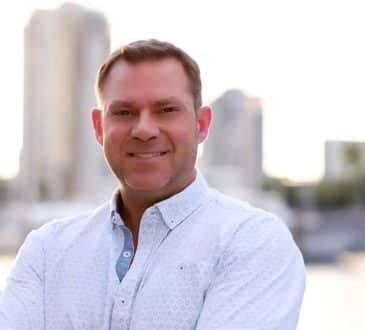Are Brand Standards Friend of Faux to an SEO Agency?

Brand standards are a force that all marketers have come up against at one point or another. Working like signposts, these standards prompt the language and creative we put out to market, forming the basis of our ongoing communication. For the most part, brand standards serve their purpose without fault and act as a silent partner to any marketing team. That is, provided you play by the rules.
As we click over into the next financial year, discussions take place surrounding budget allocations with your SEO agency taking a deserving slice of the pie in many businesses. With the focus on SEO growing and a lessened dependence on traditional forms of marketing, what does that mean for brand standards translating in SEO practices?
Growth in outreach channels
Businesses don’t need to be sold on the benefits of guest posting, with link building driving a large volume or referral business, in addition to increasing the volume and quality of your precious backlinks. What’s unclear is whether brand standards still garner the same relevancy now that traffic is coming through unowned channels. In times gone by, brands would create physical collateral, buy mixed media ad spaces and pursue PR coverage. While this activity still happens, there is a higher price barrier to entry and the results are not as sustainable as a digital activity, nor as easy to track.
With these marketing pursuits no longer the norm, brands don’t have the same stage to educate the audience on the quirks and wonders of their brand as the first point of contact, instead, they have a keyword and link. Once the audience lands on your website and social, that’s where the brand standards and personality come into play. Rather than brand identity being the ‘hook’ that motivates searchers, they arrive at the page with the brand identity acting as the ‘consideration’. Brands will commit avoidable SEO mistakes when they apply their owned channel ideas into unowned channels.
SERP limitations
Let’s take a look at owned channels and more specifically, SERP (Search Engine Results Page). When your page appears in SERP, the searcher is presented with a Meta title and Meta description. The Meta title is only 50-60 characters long, and Meta descriptions are not too much longer at about 155 characters. Every marketer will spend time making sure these titles and descriptions are both concise and compelling, but there isn’t much space for brand wit or complying language. Particularly if you are in the service industry and general search terms will present several results, some of which are almost identical in offering and price.
You ultimately have those few characters to convert to a page click, and your SEO agency will always advise that this is not the space to build out your complex brand identity strategies. Things like location, delivery, range and price indication will award you a click. Whereas using brand speak like ‘Always Cars, Always Local, Always Here’ will mean nothing to a searcher and will not resonate with their intent and need.
Perhaps you are in the hospitality market, and your establishment specifically refers to itself as ‘upscale long stay apartment’ as part of a brand strategy. Some keyword research will pretty quickly highlight that this is not a search term being used by your or any market, whereas ‘serviced apartments Melbourne’ or ‘affordable hotel Melbourne’ will have a greater chance at more visibility.
You may also find that some words are not allowed to be used to describe your hotel like ‘luxury’, as the hotel has more upscale brand under the same banner and your establishment must stay in its brand lane. Although, if you are operating in a market where you were the finest hotel in the market with a recent refurbishment under your belt, it might seem appropriate to highlight this distinction. This is when your keywords, Meta titles and descriptions go off-road in search of more volume, often at the expense of a strict brand standard strategy.
What happens when brands try to do both?
Retail giant, ASOS, proved that you cannot have it all when it comes to being 100% true to your brand standards while boasting strong SEO visibility and conversion. ASOS’ SEO faux pas was a culmination of factors gone wrong, but chief among them was the need to create a seamless brand experience in every single market at a visibility level. This stems from strict brand standards positioning their market presence as the urban pulse of the country in which they retail. An 87% drop in profits encouraged leadership to explore the downturn, where it was uncovered that ASOS was operating 200 localised microsites. The time and expense of maintaining this ecosystem would have crippled the business if it was not diagnosed when it was, but there are still long term issues that will take time to resolve.
Focusing so heavily on being a star brand to so many new and existing markets, clearly left things like local tagging and redirect due diligence as a lower priority overall. One more of many issues was the site speed was longer than 12 seconds due to the housing of all images, an oversight that even a junior would spot and try to rectify immediately. As marketers, ASOS were not doing anything wrong but rather trying to straddle their brand identity when they should have been concerned with passable SEO health first. A stronger, and perhaps more general, focus on acquisition and retention SEO would have driven the volume through their e-comm doors regardless, but they insisted on a branded experience that was too wide to control.
The discussion around increasing branded search volume
Expertise, authority and trustworthiness are the metrics that will have brands thriving or falling off the page. Beyond that, brands will often seek advice about whether or not they should look to increase branded search volume. Recommendations here will vary depending on who you speak to, and to what brand is in the discussion. Before you build out a strategy around branded keywords, always see where the research lands before assigning any muscle (or money) behind the approach.
Not surprisingly, the better known your brand, the greater volume of branded search terms. Neil Patel believes your brand name is your greatest hack, and should be used as often as possible in SERP. This is true of business names that incorporate their function, and keyword, within their business name but it won’t be right for a mobile mechanic called ‘Mike’s Garage’. Embedding your keywords in your business name is another consideration, but mature aged brands do not have the luxury to change course.
A quick way to see if your brand name ranks is to see what sort of search volume is being attributed. Searchers will be more likely to search ‘Nike runners’ as opposed to just ‘runners’, but that may not be extended to other product lines in Nike. GAP holds a similar standing in profile, but searchers are less likely to search ‘GAP jeans’ in which case GAP would be better served to rank for generic terms. Over time with the aid of guest posting and greater visibility, your brand may grow to a position where branded search keywords could be a viable strategy. This can present a full circle moment when your brand then has the oxygen to build out the brand standards and unique tone, once the search volume interest is acquired.
Like any marketing approach, there is no one-size fits all and different industries and offerings will warrant contradicting strategies to others. The power of brand can be an intoxicating concept, but can easily turn into a noose if they are adopted and applied to a fault. Contrastly, to disregard your brand presence entirely for one channel, SEO, might not be the way you choose to grow your brand. Finding an SEO agency that has worked with sectors that your brand operates in may highlight best and worst practice which can inform your SEO strategy.
Have you read?
# Top 500 Best Universities In The World For 2019.
# World’s Top 50 Universities For Medicine And Health Science Degrees, 2019.
# World’s Top 50 Universities For Life Science Degrees, 2019.
# World’s Top 50 Universities For Physical Science Degrees, 2019.
Bring the best of the CEOWORLD magazine's global journalism to audiences in the United States and around the world. - Add CEOWORLD magazine to your Google News feed.
Follow CEOWORLD magazine headlines on: Google News, LinkedIn, Twitter, and Facebook.
Copyright 2025 The CEOWORLD magazine. All rights reserved. This material (and any extract from it) must not be copied, redistributed or placed on any website, without CEOWORLD magazine' prior written consent. For media queries, please contact: info@ceoworld.biz











